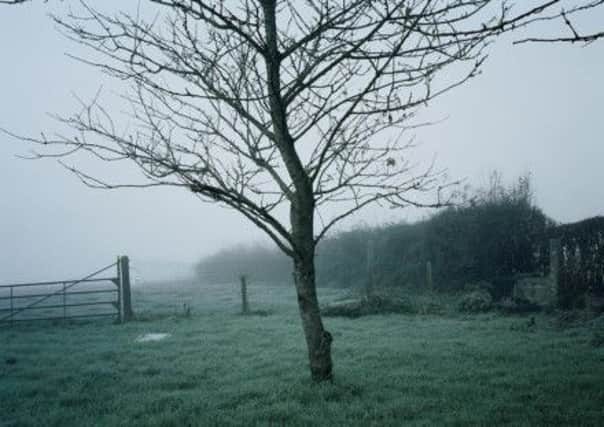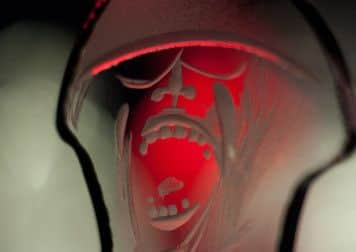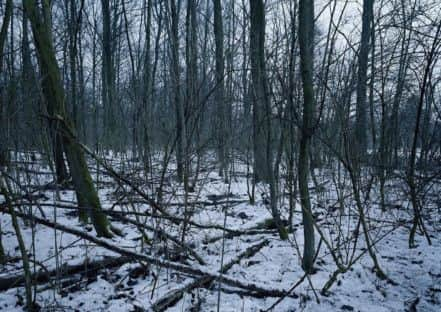Shot At Dawn: Chronicling men killed for desertion


AT POPERINGHE New Military Cemetery the register states simply that Second Lieutenant Eric Skeffington Poole died of wounds on 10 December, 1916. But Poole did not die on the battlefield at the hands of his German enemy. On a cold December dawn he was taken from his prison cell in the local town hall and, at 7.25am, was executed by a British Army firing squad.
Last year, British photographer Chloe Dewe Mathews travelled to the town of Poperinge (the town’s name has lost its “h” since 1918, but the cemetery kept its one), a few miles from Ypres. Away from the crowds on battlefield and memorial tours, she visited the cell where Poole spent his last night. Her single photograph shows a chalky wall, its surface rich with indecipherable graffiti. Looking at the image you might feel the urge to reach out and touch it, to reach back almost a century and comfort a man you have never met.
Advertisement
Hide AdThis week, communities across the country will remember the dead of the Great War. Thousands will join the queues at the Tower of London where the installation of 888,246 ceramic poppies by artist Paul Cummins is reaping both praise and opprobrium. In Edinburgh, visitors to St Giles’ Cathedral can see The Unknown, an army of glass soldiers that is the work of artist Alison Kinnaird.


Critic Jonathan Jones caused outcry last month when he described the Cummins poppies as “prettified and toothless” and argued that a meaningful memorial to the fallen of the First World War would be “gory, vile and terrible to see”. Kinnaird’s glass soldiers aren’t that, but with some of their faces apparently twisted in pain they make for uncomfortable viewing.
Shot At Dawn, a new exhibition of landscape photographs at Edinburgh’s Stills Gallery by Mathews takes a different approach: her sombre photographs record 23 sites where French, Belgian and British soldiers were held or executed for desertion by their own armies. Her accompanying book, also titled Shot At Dawn, is a sparse, sober account of a project commissioned by The Ruskin School of Art, Oxford, as part of 14-18 NOW, the cultural programme taking place across the United Kingdom to mark the centenary of the First World War.
We know about Poole from the records of his court martial for desertion in November that year. He had wandered off from his platoon some time after 5pm on 5 October. The following morning he had turned up at a medical tent looking for medication for his rheumatism. Witness statements described him at the time of his detention as “of nervous temperament, useless in action, and dangerous as an example to the men”.
Poole had enlisted in October 1914 but was transferred to join 11 Battalion West Yorkshire Regiment, 23 Division, in France at the end of May 1915. He had been knocked cold by the soil thrown up by an artillery shell on the battlefront of the Somme on 7 July and had been treated in hospital for shellshock.


Despite ample evidence of his ill health, and the equivocation of a subsequent medical board, Field Marshal Haig confirmed the conviction and death sentence. “Such a case is more serious in the case of an officer than a man,” he wrote in his diaries, “and it is also highly important that all ranks should realise the law is the same for an officer as a private.”
Advertisement
Hide AdAmong the British soldiers executed were the shell-shocked, those genuinely lost in the confusion of battle, young men who were not even legally adult, as well as those who knowingly or repeatedly disobeyed military law. In 2006, the Ministry of Defence announced that the 306 British soldiers executed for desertion were to receive a posthumous and collective pardon. The French and the Belgians have not yet followed suit.
Mathews spent two years researching her project; she spoke to experts such as historian Julian Putkowski, and Piet Chielens from the museum In Flanders Field. Staying in cheap hotels close to the battlefields of France and Belgium she would eat at different times from the other guests, go to bed early, get up in darkness and head off alone to the unremarkable farms, fields and woodlands she had identified. Every photograph has been made at the season and the hour of the original events.
Advertisement
Hide AdFuelled by shock and a sense of injustice, the project is in some ways a reaction to other rituals of remembrance. Mathews’s work asks us if the act of memory can be an imaginative one: if remembering might be more than the recitation of the known, but instead a confrontation with the unknown and the unacceptable. Faced with her photographs – a water–filled dyke, a modest village primary school, a brick-built former abattoir that now serves as a depot for a municipal roads department – we must ask ourselves not only what happened, but how on earth it might have happened.
Private Joseph Byers and Private Andrew Evans were executed at Six Farm, Loker, in west Flanders on 6 February, 1915. Nine days later Private George E Collins was shot by firing squad at 7.30am. Firmin Six’s family farmed the land and he was born just after the conclusion of the war. When Mathews met him he was an elderly man, living in the neighbouring village and still moved to tears by the fate of men who had died before he was born.
Six said that his family had been overwhelmed by the events that took place there. “It was so entrenched when he grew up,” says Mathews. “The shadow over the family, this was the memory that was held within the landscape.” Her photograph shows a chilly and misty dawn, the singular silhouette of a tree, a handful of withered leaves on its bare boughs.
There is a pattern to these landscapes – all places where, in the weak light, a man might be seen against the sky or against the dark backdrop of a wall. In asking us to stand face to face with the men who died, Mathews is also asking us to stand side by side with the men who were commanded to carry out these executions. The photographer became familiar with a special kind of topography of death, a raised bank, say, where stray bullets might be embedded in soil. Those soldiers charged with the execution of their fellows sometimes found themselves unable to carry out the task: they shot wide deliberately, they shook involuntarily. An account tells of the execution of in 1915 of a Private Briggs of the Border Regiment. “The front rank of the firing party were on their knees, and the rifles of the 12 executioners were levelled at the shoulder. As they took aim, they visibly trembled, and not a single rifle was held steady.”
Should the sites be marked or left as they are? “It’s a very difficult question,” says Mathews. “A little plaque is so demeaning in some ways. For me being a photographer, this was my way of marking what happened.” But she does want us to think about the present as well as the past.
“The whole idea now of post-traumatic stress disorder, this should have a contemporary resonance, even though it was 100 years ago. We still haven’t fundamentally tackled the idea of how people can go through these experiences and come out fine. They can’t,” she says. “We are not machines.”
Advertisement
Hide AdAs an officer, Poole’s death was remarkable, but little remarked upon. A summary of his offence and punishment was published in BEF Routine Orders on 14 December 1916. There was no public fuss, in part because his family wished to avoid distressing his elderly father. Eric Poole’s name was not on the casualty lists which were circulated to the press. Today, and in years to come, we might remember him and others like him.
• Shot At Dawn is at Stills, Edinburgh, until 25 January. The book Shot At Dawn is published by Ivory Press